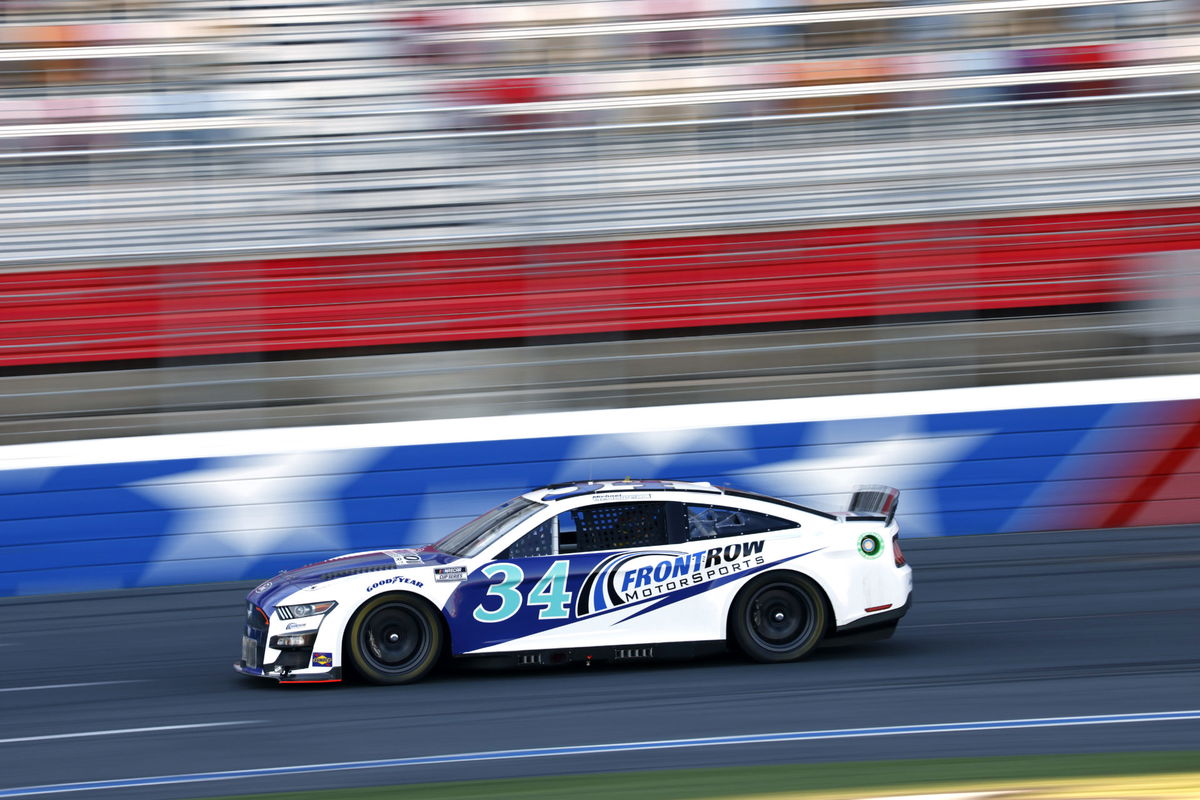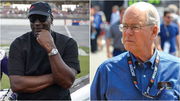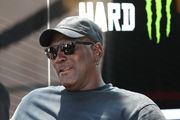
Getty
CONCORD, NORTH CAROLINA – NOVEMBER 17: Michael McDowell driver of the #34 Front Row Motorsports Ford drives during NASCAR Cup Series Next Gen testing at Charlotte Motor Speedway on November 17, 2021 in Concord, North Carolina. (Photo by Grant Halverson/Getty Images)

Getty
CONCORD, NORTH CAROLINA – NOVEMBER 17: Michael McDowell driver of the #34 Front Row Motorsports Ford drives during NASCAR Cup Series Next Gen testing at Charlotte Motor Speedway on November 17, 2021 in Concord, North Carolina. (Photo by Grant Halverson/Getty Images)
Just like NASCAR teams keep their car paint schemes under wraps, there are a few well-kept secrets in the motorsports world. Ever wonder where teams go to test their cars after tweaking them, all while keeping the new look hidden from prying eyes? Well, there are special enclosed spaces around the globe just for this purpose. One such spot is the Laurel Hill Tunnel.
Watch What’s Trending Now!
The tunnel has become a go-to testing ground for Chip Ganassi Racing, a major player in American auto racing that used to race in the NASCAR Cup and Xfinity Series. According to Racecar Engineering, the tunnel, with its railroad past, is perfect for pushing racecars to their limits, testing speeds of 100 miles per hour or even more, all away from the public gaze.
ADVERTISEMENT
The fascinating story of Laurel Hill Tunnel creation for NASCAR and Indycar testing
Back in 1881, the South Pennsylvania Railroad kicked off a big project – carving a tunnel under Laurel Ridge on the border of Westmoreland and Somerset Counties in Western PA. It was one part of a grand plan nicknamed “Vanderbilt’s Folly” to build a railroad. But for reasons lost in the sands of time, they dropped the project in 1885, leaving 831 feet of tunnel behind.
The tunnel stayed quiet until the 1930s when the Pennsylvania Turnpike, America’s first superhighway and a forerunner to today’s Interstate system, came into the picture. To cut costs, Pennsylvania reused the old railroad route, including the Laurel Hill tunnel, making it one of the Turnpike’s seven original tunnels.
And then, inspired by Germany’s Autobahn, the Turnpike was designed as a 4-lane highway for all sorts of vehicles, with no speed limits for most of its stretch. But, the tunnels were a tight fit with only two lanes. Fast forward 20 years, and they started expanding the road. As a result, Laurel Hill and two other tunnels were left behind.
ADVERTISEMENT
For 40 years, the tunnel lay dormant, used only for storing road salt. Then, in 2003, some changes started happening, sparking rumors. Hikers nearby reported hearing the sounds of racing cars echoing through the tunnel. It wasn’t open to the public like some other tunnels. The police were also said to be keeping an eye out for trespassers.
ADVERTISEMENT
Today, it’s known that Chip Ganassi Racing transformed the abandoned tunnel into a high-tech lab for testing NASCAR and Indyrace cars at high speeds. They paved it and added climate control, safety gear, and data systems. It even played a role in developing the G-Force IndyCar in 2004.
ADVERTISEMENT
When word got out that Chip Ganassi Racing had this secret weapon, it stirred up quite the debate in racing circles. The Laurel Hill Tunnel became one of the most talked-about spots in 21st-century racing. The tunnel’s big draw? Endless straight-line testing in perfect conditions, no wind, just controlled temperature, with real, full-scale cars.
Watch This Story: NASCAR Might Have Just Saved Themselves With the $7.7 Billion Media Rights Deal
The place needed a lot of elbow grease to get it race-ready. In 2003, it was a mess, filled with construction materials. But once ready, it became a game-changer for the team, allowing them to rapidly test and refine new designs. Unlike traditional wind tunnels where air moves around a static NASCAR car, here they could test in more realistic conditions. Even adjusting the temperature to their liking.
ADVERTISEMENT
However, it wasn’t all smooth sailing. There were murmurs about the legality of this testing method and concerns about carbon monoxide poisoning. But despite the controversies, the tunnel has been a unique and innovative asset for the racing team.
Top Stories
What Settlement Agreement Have Michael Jordan & NASCAR Reached? Everything to Know From Evergreen Charters to Payout

NASCAR Flexes Authority With Drastic ‘Sign or Sell’ Charter Clause Hours After $365M Lawsuit Settlement

Michael Jordan Makes 8-Word Statement After Forcing NASCAR to Lawsuit Settlement

Jordan Fish Pens Heartfelt Message for Fiancé Denny Hamlin After Dramatic Courtroom Settlement With NASCAR

Rick Hendrick and Roger Penske Rejoice as NASCAR Dramatically Settles Michael Jordan’s $365M Charter Lawsuit

Carbon Monoxide case at Ganassi Racing testing site
Jesus Hernandez, a mechanic with Earnhardt Ganassi Racing, found himself in a bit of a pickle. In 2009, he visited the Laurel Hill Tunnel three times for work. After these visits, he started feeling under the weather, showing signs that pointed to carbon monoxide poisoning. Concerned, Hernandez brought this up with the EGR officials.
ADVERTISEMENT
EGR didn’t just brush off his concerns; they ran a few tests in the tunnel. According to them, the carbon monoxide levels were within the safe limits set by OSHA. Still, they wanted Hernandez back in the tunnel. Hernandez agreed, but with a condition – he’d inform OSHA about his worries.
Read More: NASCAR Drivers’ Name Rail Update Confirms Fans Speculation of Kaz Grala’s Full-Time Cup Series Move
Next thing you know, Hernandez was shown the door, fired for what they said was his reluctance to cooperate. Interestingly, nothing substantial came out of his lawsuit, but it did raise eyebrows. Why let Hernandez go just for planning to loop in OSHA, especially if the team was confident about their carbon monoxide tests being up to snuff? It’s a question that leaves you wondering, especially since the team assured Hernandez everything was fine with their tests.
ADVERTISEMENT
ADVERTISEMENT
ADVERTISEMENT
ADVERTISEMENT

